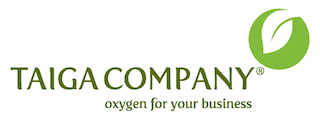What are Some Realistic Sustainable Fashion Business Ideas for a Greener Future?
Needless to say, the fashion industry is notorious for its environmental impact. Just think about it, there’s the excessive waste to harmful production processes, the industry's footprint is far from sustainable. Plus, it’s expensive to get into, not everyone can afford a retail, and there’s always a chance for a break in too. But on top of that, it’s about creating a greener future.
Nowadays, you’re going to find more solopreneurs out there. Not only that, but it’s more of the fact that it’s hard to get a team, and it’s hard to get founders to work together with the same vision. But of course, some people are far more passionate than others, and that can be said for fashion and sustainability, too.
Now, it can be hard trying to be ethical and sustainable in a industry that is basically the exact opposite. But at the same time, there are plenty of realistic and creative ways to start up a business (that shouldn’t be too expensive) either. So, let’s go ahead and go over some potential ideas that solopreneurs could do for their businesses.
Screen Printing on Thrifted Shirts
It’s so simple, but it’s a business model that’s being used more and more. So, thrifting is not only budget-friendly, but it’s also a great way to give old clothes a second life. Basically, you can hit up your local thrift stores or scour secondhand shops for some hidden gems.
All you really need to do is look for well-made, durable fabrics that will hold up to the printing process. You can create your own designs or collaborate with local artists to offer something truly unique. The key is to keep your printing process as eco-friendly as possible—use water-based inks and avoid harmful chemicals. Once you’ve got your stash, it’s time to get creative.
So, each piece is one-of-a-kind, catering to consumers looking for something special and eco-conscious. There are some businesses that do this, and they seem pretty successful, so it could be something for you. Plus, the low upfront cost of materials makes it an ideal venture for solopreneurs.
Creating Clothes and Textiles from Recycled Yarn
There’s a lot of debate about whether or not breaking down old textiles and getting the threads is sustainable. The same can be said for turning old fabric into yarn or other materials. Every process is different, and every company is doing it differently, too. For example, recycled T-shirt yarn and fabric by GANXXET, and how they create their yarn and thread are going to be different from how a fast-fashion company would do it.
But with that said, it’s still sustainable, and people want to buy recycled items! So, just imagine taking recycled materials and turning them into beautiful scarves, bags, or even cozy sweaters. It’s like crafting with a conscience.
While yes, for a soloprenuar this might be more on the expensive side, but you have to keep in mind that people are willing to spend more money on products if it means they’re helping the planet. So it’s all justified. Plus, recycled materials helps in storytelling, especially in marketing (and transparency).
Curating Thrifted Designer Clothes
Now, if you’ve got an eye for style and a love for high-end fashion, how about curating thrifted designer clothes? It’s like being a fashion detective—hunting down those hidden gems at thrift stores, consignment shops, or even online platforms like Depop.
The thrill of the find is half the fun! But of course, the key to curation is knowing your stuff and putting in a major effort into all of this too. Overall, your curated collection should reflect a cohesive style or theme, making it easier for customers to find pieces that fit their taste.
So, there’s a mix of investment in this because sometimes shops know the value of these designer items, but sometimes they have no idea. Sometimes, you fork over a lot of money, and sometimes, you don’t need to. Plus, you’ll have to sometimes travel in order to curate, and that alone can cost some money as well. But in addition to selling online, consider hosting pop-up shops or participating in local markets to reach a broader audience.
These events also offer an opportunity to educate consumers about the benefits of buying secondhand and the importance of sustainability in fashion.
Upcycling Vintage Fabrics into New Garments
So, this somewhat ties into the screen printing example earlier because this involved upcycling but this one offers more options. So, upcycling clothes has always been a thing, from sewing patches to shirts, tye-dye, those 2010 cuts in shirts, and so on. These are examples, but why not consider upcycling? As long as you know how to sew and you’re fairly creative, this can be a low investment sustainable fashion business.


